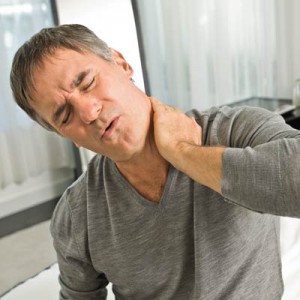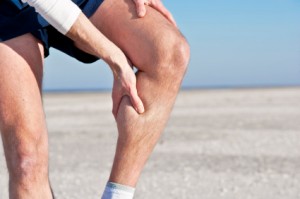
 Back pain, according to statistics, is something that 80% of us will experience some time in our lives and is one of the most common reasons why patients visit their Winchester Chiropractor, Max Atkinson.
Back pain, according to statistics, is something that 80% of us will experience some time in our lives and is one of the most common reasons why patients visit their Winchester Chiropractor, Max Atkinson.
Dr. Atkinson (DC) says that preventing back pain from recurring is a major concern for many of his patients. Wanting to be able to continue with sporting activities, doing day to day jobs like gardening and DIY and being able to work pain-free in a job which involves repetitive movements are all reasons why so many elect for regular ‘wellness visits’. In addition to gentle Chiropractic adjustments, he provides information and guidance on the key things that patients can do to protect their backs and help to prevent further episodes of pain.
Worries about the problem getting worse as time goes on are unsurprising as for most people who have had a back injury the risk of recurrence is high. If you are presently suffering from back pain or have had a problem and want to do all you can to stop it from happening again, call your Winchester Chiropractor, Dr. of Chiropractic, Max Atkinson on 01962 861188 to arrange an appointment.
Meanwhile, here are some top tips you can use to protect your back!
- First and foremost, remember that pain is a warning sign. If something you are doing hurts, stop right away! Do not try to work through it or see if it eases off and definitely do not take painkillers to dull the pain so that you can carry on. These medications only mask the symptoms so you could be causing more damage without realising.
- Injuries during lifting or carrying weight are a common cause of back injury. Your employer should provide health and safety training on preventing back injury if your job involves lifting. If you have not received workplace training, ask for it! Your Chiropractor can also provide advice on preventing back pain when lifting as part of the overall package of Chiropractic care.
- Take regular exercise. Classes that help with flexibility and core strength are invaluable but it is important to stress that you should discuss any back problems you have with the person taking the class. This is vital as a good tutor will be knowledgeable enough to suggest alternatives or modifications to some movements so you can go on exercising safely. It is also important to do the same kind of warm up and cool down exercises you would do at the gym or exercise class before and after tackling jobs at home such as digging, or home maintenance.
- Choose your furniture carefully. In your seating areas, choose furniture that allows you to sit comfortably with your feet on the floor and a supported back (make sure your workplace chair is ergonomically designed and adjusted for you). For sleeping, choose a bed with a mattress that supports your spine and a pillow that supports your neck. The ideal sleeping position keeps the spine in alignment. Laying on your side is better than on your tummy as this is the position worst for your spine!
- Avoid sitting for long periods. Prolonged sitting at a workstation or slouched on the couch in front of the TV weakens muscles. Remind yourself to get up, even if only for a minute, every twenty minutes or so at work and during TV commercials at home!
If you have concerns, see your Chiropractor. Life cannot stop because you are worried about a painful back injury recurring. Long-term back pain conditions can make life a misery but many can benefit from Chiropractic adjustments and the diet, lifestyle, exercise and posture advice your Chiropractor can give. So call him today, his help with preventing back pain from striking again, will enable you to get back to the activities you enjoy, worry-free.
 Stress is nothing something to be taken lightly. When you’re genuinely stressed, your body is under pressure, reacting in a ‘fight or flight’ way, and if you have any existing medical conditions, you could find these are exacerbated, or even changed towards a more severe form, because of the stress which is affecting your mind and body.
Stress is nothing something to be taken lightly. When you’re genuinely stressed, your body is under pressure, reacting in a ‘fight or flight’ way, and if you have any existing medical conditions, you could find these are exacerbated, or even changed towards a more severe form, because of the stress which is affecting your mind and body.
Stress is no laughing matter.
It is a medical fact that stress has a major effect on health, mentally, emotionally, and physically. It’s therefore important to identify what it is that is causing your stress, and then adapt accordingly. Reducing stress is sometimes simple, but other times it takes practice to switch your mind or habits to a different channel.
Thankfully, help is at hand. Here at the Perth Brain Centre, we are highly skilled and experienced in helping individuals understand the best ways to cope with stress, and to give valuable assistance in changing habits and breaking negative thought patterns. Stress leads to depression and anxiety, which we all know is no picnic. Anxiety treatment can be accessed in order to reduce symptoms, and hopefully help kick out stress and its reactions altogether.
So, what happens when you’re stressed?
Basically, your mind perceives a situation which it thinks is threatening in some way, so your body kick-starts adrenaline and cortisol production, two hormones which are linked with stress. The reaction of these hormones means your body goes into ‘fight or flight’ mode, and this means you undergo a whole host of physical symptoms, such as loss of appetite, racing heart-beat, shallow breathing, negativity, a racing mind, and if you have any existing medical conditions, such as a heart problem, these could adversely affected. The longer the stress goes on for, the worse the whole situation becomes, with sleep affected, which could then cause problems with relationships and work.
Effective stress management is down to identifying the cause and reducing it as much as possible. Of course, sometimes it’s down to coping mechanisms. This can take the form of changing your negative thoughts to positives, learning effective relaxation techniques, making sure you get enough sleep, analysing your diet for possible problems with nutrition, avoiding alcohol and caffeine, seeking social support, taking part in sport, and it could also be as simple as learning to say ‘no’ to people when you feel over-loaded. Keeping a stress diary is a useful tool to identify when you feel most stressed, which could help you pin-point the cause, e.g. work, or home life.
If you are concerned about the effects of stress, no matter what the cause, call the practice now on (08) 6500 3277 to arrange an appointment. We can help you identify the cause of your stress and advise you on how to live with it in a way which won’t impact your general health.
Stress in its worst forms can cause serious health problems, and put simply, life is too short to be stressed.
Have you had a concussion in the past and received concussion treatment?
If you’re saying ‘yes’ to both of the above, then you may be interested to learn that there is a potential link between the two conditions, which could mean suffering a previous concussion, one or more, means you may be more susceptible to migraines in the future.
Not convinced?
This is by no means a definitive answer, however two studies have shown that there certainly could be a link, and that further research needs to be done.
What does this mean?
Basically, if the link proves to be true, a more targeted treatment option could be developed for patients who have suffered a head injury in the past, having received concussion treatment, and who then go on to experience migraines, or migraine-like symptoms. On top of this, knowing that there is a link means prevention could be put into place, and that is great news for those involved.
The first study which raised this intriguing possibility took a selection of 74 high school football players and asked a selection of questions regarding whether they had suffered from headaches and migraines in the past, and whether they had suffered a concussion as a result of a sporting injury. 34% of those questioned reported a history of migraines, with a further 28% reporting sinus headaches instead. 37.5% reported undergoing concussion treatment in the past, and out of that 37.5%, 41% reported having migraines since that time.
The general rate for migraine suffering in the general population is around 16%, so this set of statistics seems to show that there is a link between concussions in the past and resulting migraines in the future.
A further study certainly added more weight to this argument.
A random selection of 25 patients aged between 12 to 19 years, all regular sports players of varying types, reported that all of them had experienced headaches between sustaining their injury and then returning back to their particular sport, and that 68% of those were migraines, accompanied by regular migraine symptoms, such as nausea, photophobia, visual disturbances, vestibular symptoms, and neurocognitive problems.
Of course, these two studies don’t solidly prove or otherwise whether there is a link, but they certain raise a huge question mark of possibility, and where there is a question mark, further research must be done. If this is proven to be the case, this is great news for both present and potential migraine sufferers, because targeted treatment may be more effective as a result.
If you are at all concerned about migraines, concussion, or both situations together, then don’t worry for a second longer. Call the practice now on 03 8652 1628 to arrange an appointment to discuss your situation with one of our friendly, helpful, and highly experienced staff. Where migraines are concerned, help is certainly at hand after a thorough consultation and proper diagnosis of your situation.
 Neck pain is a frequent complaint and ranks right up with headache, backache, and toothache as one of the most troublesome sources of pain. Most people experience neck pain at some time or another. Perhaps after a long day at work, bent over a desk, in front of a computer, or maybe after a particularly stressful time during which you were unable to relax your muscles. The pain could be dull or sharp, gradual or more sudden. Perhaps you’ve been ignoring minor neck pain for a little while, hoping it will go away, but it only gets worse. Neck pain can interfere with your ability to function, to focus, or to enjoy many activities.
Neck pain is a frequent complaint and ranks right up with headache, backache, and toothache as one of the most troublesome sources of pain. Most people experience neck pain at some time or another. Perhaps after a long day at work, bent over a desk, in front of a computer, or maybe after a particularly stressful time during which you were unable to relax your muscles. The pain could be dull or sharp, gradual or more sudden. Perhaps you’ve been ignoring minor neck pain for a little while, hoping it will go away, but it only gets worse. Neck pain can interfere with your ability to function, to focus, or to enjoy many activities.
Neck pain can have any of a number of causes, but most cases fall into one of three categories:
- Normal Wear – The typical modern lifestyle can be a huge factor in neck pain. Many of us spend hours every day behind a desk, looking down or at a computer, often forgetting to take breaks to stretch. This position places enormous strain on the neck. Poor posture and gaining weight can exaggerate the problem.
- Aging – Degenerative diseases such as degenerative disc disease, osteoarthritis, and rheumatoid arthritis can affect younger people, but are primarily seen in the elderly. As we age, our cartilage and the discs between the vertebrae begin to deteriorate and lose elasticity. This can lead to pain and lack of mobility.
- Injury – Athletes, especially those who play high impact contact sports such as football, are at particularly high risk of neck injury. Neck injury is also a common injury in car crashes, particularly rear end collisions.
Many people try to self medicate with over the counter pain relievers, but this only serves to mask the pain, while the underlying cause only gets worse. In a few hours, the pain returns and more medication is needed. Medication is great for short term relief, but can cause liver damage if used long term. Chiropractic care is a drug-free, noninvasive method of treating pain, whether in the neck or other areas. Chiropractic seeks to locate and treat the underlying cause of pain to provide long-lasting relief.
Chiropractors are trained to adjust the body in ways that restore balance and mobility. Your chiropractor will use his or her hands to apply gentle pressure to specific joints to improve your range of motion and ease pain. He or she may also use massage to loosen the muscles in the surrounding area to prevent tension from causing the problem to return. You may also be given some stretching and strengthening exercises to do at home to help improve your posture and prevent pain from returning.
Chiropractic is a highly effective method of treating most pain, but is not appropriate for all situations. If your neck pain is accompanied by high fever, sensitivity to light, nausea, you may have meningitis or another serious infection. If you have any of these symptoms, you need to go to the hospital for immediate medical care. If your initial assessment shows your neck pain may be caused by a spinal cord injury, your chiropractor will refer you to a specialist. If your pain is caused by fibromyalgia, arthritis, or certain other conditions, your chiropractor may work in cooperation with your general practice doctor to manage your pain.
You don’t have to live with neck pain, contact Spine Scan now on (08) 9221 0402 to schedule an appointment to find out how we can help you get your life back.
 If you’re like many people, you’ve enjoyed easy, pain-free mobility your entire life. As you get older, or if you suffer an injury or trauma, this may change. Pain anywhere can be miserable, but pain in the hips, legs, knees, or feet can make it difficult or impossible to move around, interfering with many basic activities.
If you’re like many people, you’ve enjoyed easy, pain-free mobility your entire life. As you get older, or if you suffer an injury or trauma, this may change. Pain anywhere can be miserable, but pain in the hips, legs, knees, or feet can make it difficult or impossible to move around, interfering with many basic activities.
Acute pain, or pain that comes on suddenly, is usually the result of an injury or trauma. This type of pain is typically easier to diagnose and treat, partly because it’s pretty easy to figure out what triggered it, and also because it’s less likely to be ignored.
Chronic pain, which comes on gradually and may start with little more than the occasional twinge, can be harder to treat, partly because it can be difficult to identify what causes it, but also because it’s more likely to be ignored, allowing it to grow worse over time.
Many people treat pain with medication so they can go about their lives with minimal interference. Medication only serves to cover pain, not cure it, which often leads to taking more medication, perhaps even at higher doses. If this describes you, you could be making the problem worse, and risking long term health consequences.
Chiropractic can offer relief, not by masking pain, but by finding and treating the root of the problem. Chiropractic is safe, gentle, and effective. But chiropractic doesn’t stop at finding and treating the problem that is causing your pain, it goes further and helps you strengthen the area to help you avoid future injury or pain. Besides the techniques you may be familiar with, chiropractors have a couple of techniques specifically used to treat pain in the lower part of the body.
Myofascial Release Technique is often used for treating tightness in the lower hips, legs, and lower back, which can also contribute to knee pain. Myofascial release is a specific deep tissue massage technique used to loosen muscles in affected areas to relieve pain and improve range of motion.
Active Release Technique is a chiropractic technique most often used to treat injuries to the meniscus, one of the most common knee injuries, especially among those who participate in sports.
Many problems begin in the feet. Each foot is made up of 26 little bones, 33 joints, 20 muscles, and over 100 ligaments, each of which is crucial to not only supporting the weight of the rest of your body, but also bending, rotating, and flexing so you can move. Your feet are under constant strain, especially if you wear shoes that don’t fit properly, or high heels.
When you have a problem with your feet, the rest of your body will be thrown out of alignment, leading to many other problems. You can identify problems that could cause pain later by looking at the soles of your shoes. If you notice uneven wear, especially on either the inside or outside of the shoes, you may have a misalignment or other problem that could lead to more painful issues.
If you are experiencing pain in your feet, legs, knees, or hips, a chiropractor can help. Even if you aren’t experiencing pain, if you notice any uneven wear in your shoes, a chiropractor can assess your gait and how you distribute your weight to identify any abnormalities. If needed, your chiropractor can recommend custom orthotic insoles to ensure proper alignment and balance to keep you mobile and pain free.
If you are in pain, or even if you just want to be certain that everything is working as it should, call Chatty Chiropractic now on (03) 9303 9952 (Roxburgh Park) or (03) 9746 3977 (Sunbury) to schedule an appointment for a chiropractic evaluation.
 It’s perfectly normal to worry about your children, in fact if you weren’t worried then there would be something very wrong! When our little bundles of joy are first brought into the world our anxiety goes into overdrive, looking for every single thing that might be slightly off, and when we focus on something, the worries intensifies.
It’s perfectly normal to worry about your children, in fact if you weren’t worried then there would be something very wrong! When our little bundles of joy are first brought into the world our anxiety goes into overdrive, looking for every single thing that might be slightly off, and when we focus on something, the worries intensifies.
Retained neonatal reflexes are worrying for parents, because when your child doesn’t seem to be developing at the rate you would expect, you of course begin to be concerned about their future and what exactly is wrong.
Retained neonatal reflexes are basically when your child doesn’t seem to rid themselves of the primitive reflexes they were born with, and these aren’t replaced with newer, more developed skills. For instance, every child is born with the skills to survive their early months, such as knowing how to attract attention when something is wrong, and how to feed, but as time goes on these reflexes should be replaced with further development; when this doesn’t happen, this is called retained neonatal reflexes.
Luckily in these cases there are some treatment options to help rewire the brain and gently coax development to the fore; chiropractic care is one of them. Here at Neurobalance we are experienced in helping children and parents going through this hard time, and Sydney chiropractor Dr Veronesi offers treatment and advice to achieve the best possible outcome.
Chiropractic in this particular condition involves the use of movement exercises to help rectify motor skill problems, whilst ironing out the nerves within the joints and correct spinal problems. How does this help? Well, it helps correct problems in the way information is processed and distorted, rectifying any blockages and correcting flow. This all basically means that the brain is able to help integrate these neonatal reflexes and replace them or enhance them with new ones, just as nature intended.
Symptoms of retained neonatal reflexes are far-reaching, and we know that one size never fits all, but a few common ones are anxiety or being fearful, poor memory or poor concentration, poor posture, and slow development in terms of movement, such as crawling. Conditions such as ADHD or autism are characterised by retained neonatal reflexes also, meaning learning difficulty conditions go hand in hand with the importance of rectifying this problem.
If you are having worries or difficulties with your child that sounds a lot like this condition, then help is certainly at hand. Call the practice now on 02 9938 5456 and discuss with our friendly, highly skilled staff about what we can do to help you and your child in his or her further development, helping to put right any problems and set them on a road to achieving their potential in the future. Your child is undoubtedly the most important person in your life, so don’t delay in seeking help if you are at all worried about any aspect of their behaviour or development.
 There are fewer health-related issues more mysterious than a food allergy. Finding out the exact cause can be like something from a detective film, and it’s not until the cause is solidly pin-pointed that the person can be sure they have a handle on their allergy, and can avoid the trigger completely.
There are fewer health-related issues more mysterious than a food allergy. Finding out the exact cause can be like something from a detective film, and it’s not until the cause is solidly pin-pointed that the person can be sure they have a handle on their allergy, and can avoid the trigger completely.
It’s first important to recognise that a food allergy is totally different from a food intolerance. Food allergies can be fatal in their most severe form, an allergic reaction which occurs instantly or soon after eating a trigger food which the body rejects, sometimes in a violent way. However a food intolerance is more about the body having issues digesting a certain food, such as what happens with a lactose intolerance.
Anyone can have a food allergy at any time in their life. Children with food allergies may grow out of them in time, however if an adult develops an allergy, this is likely to stick with them for the rest of their life. Identifying the cause is vitally important to stop a severe reaction from occurring, and because of the unpredictable nature of a reaction, the mysterious cause should be sought out as quickly as possible.
Symptoms of a food allergy can be wide-reaching, but the main ones are difficulty swallowing, difficulty breathing, itching in the mouth, skin rashes, hives, diarrhoea, vomiting, and abdominal pain. Throughout the course of the reaction, the symptoms may change from one to another, as the food makes its way through the digestive tract. This can all happen over the space of an hour, and in the event of a severe reaction, it’s important to get help fast.
The most common causes of food allergies are shellfish, such as shrimp, crab, crayfish etc, milk, eggs and peanuts. As soon as the trigger is identified, the person involved should avoid it completely, which of course means checking food labels carefully for the rest of their life. Luckily there are now regulations in place to ensure that ingredients are present on labels, making it easier to avoid important triggers.
When diagnosing a food allergy, the doctor will take a detailed history from the patient, and may at first advise an elimination diet. This is obviously where the patient eliminates certain common triggers one at a time from their diet, and watches for symptoms, keeping a diary to help the doctor make a firm diagnosis. If this still doesn’t throw any light on the problem at hand, there are other blood test-related diagnosis methods which can be used to measure levels of IgE (an antibody involved in the allergic reaction) in the patient’s blood.
Of course, avoidance of the trigger is the best form of attack against a food allergy, however in the event of a severe allergic reaction, the patient may be advised to wear a warning bracelet and carry adrenaline for self-administration in the event of a problem.
A food allergy once diagnosed can be easily managed, but the hard work is figuring out the mystery. If you are at all worried about food allergies, call the practice now on (07) 4661 9988Warwick, or (07) 3854 0165 Tenerife to arrange an appointment.
 If you’re under the illusion that a migraine is just a bad headache, you’re very wrong. Ask anyone suffering regularly from migraines, or even someone who has only ever had one, and they’ll tell you that a migraine is like the worst headache on the planet, then doubled. The scary thing is that a vast amount of people are regularly affected by migraine attacks, and a lot of it is down to the stressful lives we lead nowadays.
If you’re under the illusion that a migraine is just a bad headache, you’re very wrong. Ask anyone suffering regularly from migraines, or even someone who has only ever had one, and they’ll tell you that a migraine is like the worst headache on the planet, then doubled. The scary thing is that a vast amount of people are regularly affected by migraine attacks, and a lot of it is down to the stressful lives we lead nowadays.
It is thought that migraines are more common in men than women, and out of the 8 million sufferers in the UK alone, 18% of these are female, compared to 6% of men. Of course, children are also affected, however these are thought to decrease in severity as they get older, despite the fact that in this age group, boys are more likely to be affected. Why is this? Well, hormones play a big part in migraine causation, especially in adult females with hormonal disturbances during the menstrual cycle and the menopause.
There are countless triggers to a migraine attack, and these are generally variable on a person to person basis. Stress is a major cause, as well as poor diet and little exercise, however an intolerance to bright lights, noise, smoking, alcohol, hormonal causes, consumption of certain foods, such as chocolate and nuts, and consumption of certain ingredients in food, such as monosodium glutamate (MSG), are all common triggers to a migraine attack.
What are the different types of migraine?
There are two types of migraine – migraine with aura, and migraine without aura.
Whilst you might think that migraine without aura sounds less severe, this is actually worse than the first type, and can last anything up to three days, with debilitating symptoms rendering the person basically useless until the attack passes. Migraine with aura can last for around an hour and is accompanied by visual disturbances, and occasional nausea and vomiting.
Symptoms of a migraine include flashing lights before the eyes, tunnel vision, temporary blindness, zigzag lines, dizziness, numbness, vertigo, confusion, fainting, inability to stand light or sound, low blood pressure, and extreme pain in the head, usually around the front and the temples.
As you can see, a migraine is not a pleasant experience, and is not simply a bad headache.
What is the treatment for migraines?
There is no cure for migraines unfortunately, and it’s more about managing symptoms and cutting down on attack frequency. There are many effective methods for this, however the most common does still tend to be medication. This isn’t always the best option, because side effects can be unpleasant, they don’t work for everyone, and they don’t always alleviate symptoms enough. Other options are more holistic and include stress management, acupuncture, chiropractic treatment, deep relaxation, exercise, and looking at the overall diet, as well as cutting out triggers.
If you are struggling with the symptoms of migraines and the frequency of attacks, call the practice now on (03) 9381 1991 to arrange an appointment.
 You will probably have heard the letters ADHD and ADD in passing, and maybe you know someone who has been diagnosed with the condition, but do you really know what it is?
You will probably have heard the letters ADHD and ADD in passing, and maybe you know someone who has been diagnosed with the condition, but do you really know what it is?
Medical terms can be complicated, especially when abbreviated!
ADHD stands for attention deficit hyperactivity disorder, and ADD is simply attention deficit disorder. Whilst both are subtly different, they are essentially very similar in nature, and the overall general treatment is the same regardless. The types of ADHD/ADD which fall underneath the same umbrella however are very different, and should be diagnosed and treated differently in effect.
The difficulty in this case comes from recognising symptoms, and identifying the type. Treating the appropriate type of ADHD/ADD in the correct way will have a much greater success rate for the person involved. Thankfully, testing has come on leaps and bounds over recent years, so more and more people suffering with the effects of this difficult condition can get effective treatment faster, and live their lives free of the sometimes debilitating effects of this complex condition.
The main symptoms of ADHD/ADD are:
- Difficulty concentrating
- Easily distracted
- Often losing things
- Not organised
- Often late
- Easily side-tracked
- Often working on several tasks at once because of an inability to concentrate on one thing
As you can see, these are traits which could be easily mislabelled, especially in adults.
Whilst children are most often diagnosed with the condition, it can and does affect adults, and it is most often the case that the adult has had it since childhood, but it has only just been picked up, often because of a family member or someone close has noticed traits and persuaded the person affected to seek help.
There are several types of ADHD/ADD, but the main are inattentive, hyperactive, and combined. Inattentive is often the hardest to diagnose because the symptoms which present could be put down to someone being a little withdrawn or shy, when in fact they are down to ADHD/ADD. Because of this, many go undiagnosed.
Much in the way of study and research has gone into the best treatment options for ADHD/ADD, and the best ways to identify the particular type. EEG biofeedback has shown great hope for treatment, with those undergoing this form showing a 60/70% success rate in medication reduction after treatment. More research is going into this, but it certainly shows hope on the horizon.
The key first step to seeking the treatment required to live a life in control of ADHD/ADD symptoms is to seek help if you are at all worried. If you are concerned about symptoms which you believe could be down to this condition, call the practice now on 03 9095 7990 to arrange an appointment to discuss your worries and possible options.
Diagnosis of the condition, and then determining the type is the first step to a targeted treatment plan, which will help make life much easier for the person involved, as well as close friends and family, in understanding the condition and its effects.
